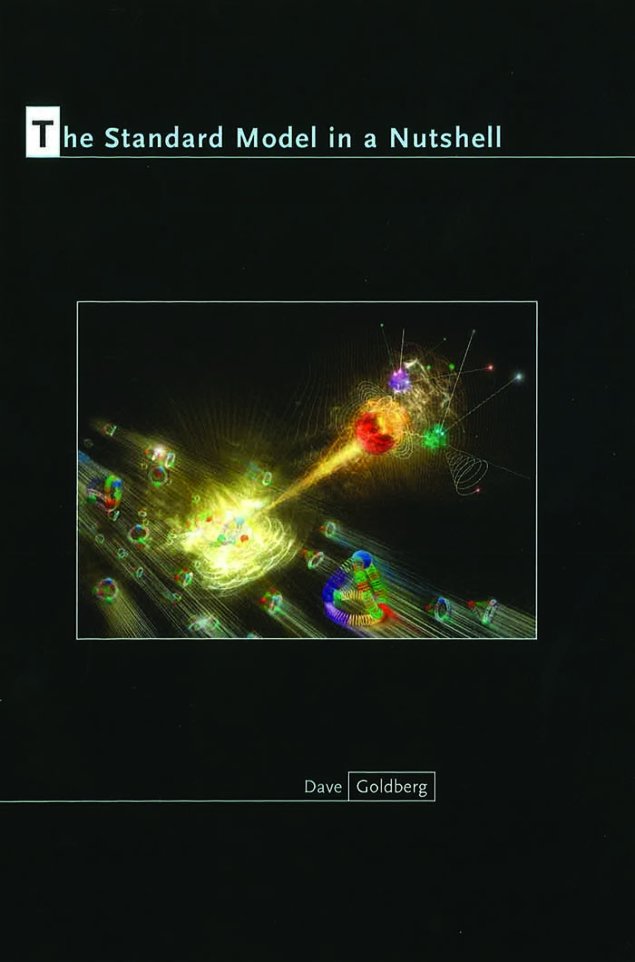By Dave Goldberg
Princeton University Press

This book is an excellent source for those interested in learning the basic features of the Standard Model (SM) of particle physics – also known as the Glashow–Weinberg–Salam (GSW) model – without many technical details. It is a remarkably accessible book that can be used for self learning by advanced undergraduates and beginning graduate students. All the basic building blocks are provided in a self-contained manner, so that the reader can acquire a good knowledge of quantum mechanics and electromagnetism before reaching the boundaries of the SM, which is the theory that best describes our knowledge of the fundamental interactions.
The topics that the book deals with include special relativity, basic quantum field theory and the action principle, continuous symmetries and Noether’s theorem, as well as basic group theory – in particular, the groups needed in the SM: U(1), SU(2) and SU(3). It also covers the relativistic treatment of fermions through the Dirac equation, the quantisation of the electromagnetic field and a first look at the theory of gauge transformations in a familiar context. This is followed by a reasonable account of quantum electrodynamics (QED), the most accurate theory tested so far. The quantisation rules are reviewed with clarity and a number of useful and classic computations are presented to familiarise the reader with the technical details associated with the computation of decay rates, scattering amplitudes, phase-space volumes and propagators. The book also provides an elementary description of how to construct and compute Feynman rules and diagrams, which are later applied to electron–electron scattering and electron–positron annihilation, and how the latter relates to Compton or electron–photon scattering. This lays the basic computational tools to be used later in the sections about electroweak and strong interactions.
At this point, before starting a description of the SM per se, the author briefly describes the historical Fermi model and then presents the main actors. The reader is introduced to the lepton doublet (including the electron, the muon, the tau and their neutrinos), the weak charged and neutral currents, and the vector bosons that carry the weak force (the Ws and the Z). This is followed by an analysis of electroweak unification and the introduction of the weak angle, indicating how the electromagnetic interaction sits inside the weak isospin and hypercharge. Then, the author deals with the quark doublets and the symmetry breaking pattern, using the Brout–Englert–Higgs mechanism, which gives mass to the vector bosons and permits the accommodation of masses for the quarks and leptons. We also learn about the Cabibbo–Kobayashi–Maskawa mixing matrix, neutrino oscillations, charge and parity (CP) violation, the solar neutrino problem, and so on. To conclude, the author presents the SU(3) gauge theory of the strong interactions and provides a description of some theories that go beyond the SM, as well as a short list of important open problems. All this is covered in just over 250 pages: a remarkable achievement. In addition, the book includes many interesting and useful computations.
This work is a very welcome addition to the modern literature in particle physics and I certainly recommend it, in particular for self study. I hope, though, that in the second edition the correct Weinberg is portrayed on p184… an extremely hilarious blunder.








